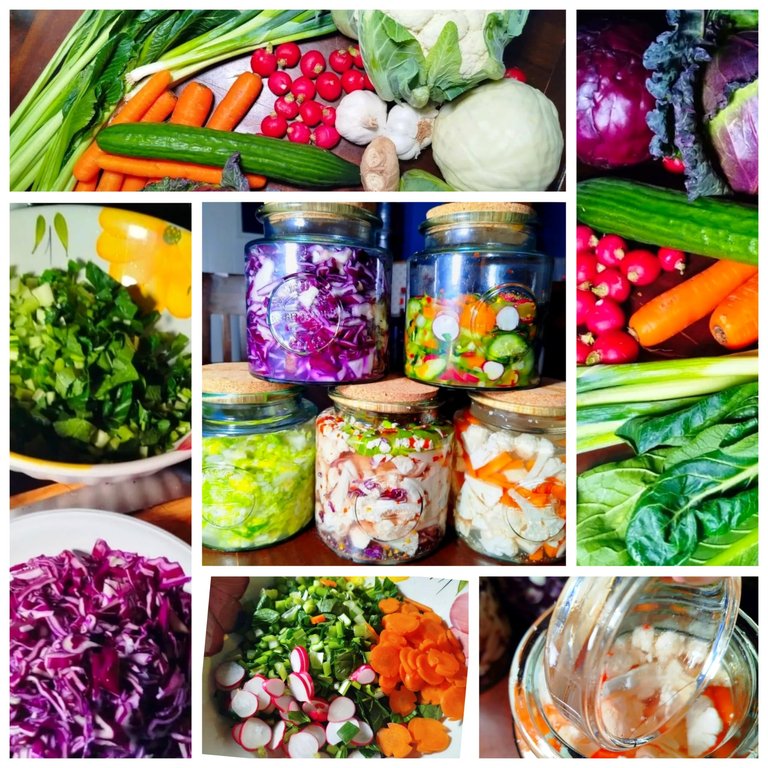
After visiting the farm market yesterday, I decided to ferment what I bought instead of storing it in the fridge.
Fermenting is one of the oldest methods of preserving vegetables. Not only does it keep them fresh for longer, but it also enhances their flavour and nutritional value, enhances their digestibility, increases antioxidants, promotes gut health with beneficial bacteria, and boosts our immune system.

The Science Behind Fermentation 🍃
Fermentation is a natural metabolic process where microorganisms, mainly lactic acid bacteria (LAB), break down sugars into lactic acid. This process creates an acidic environment that preserves the vegetables, enhances their digestibility, and inhibits the growth of harmful bacteria. The probiotics produced during fermentation contribute to a balanced gut microbiome, which plays a crucial role in digestion, immune function, and even mental health.
Let’s explore how to ferment nutrient-rich veggies with the right salt ratio, an easy process, and tasty results!
Getting Started: The Essential Fermentation Ratio 🍃
☝️ The success of fermentation depends on using the correct amount of salt. The general recommendation is a 2-3 % brine solution, which means:
20 grams (about 1 tablespoon) of salt per 1 litre (4 cups) of water.
Alternatively, if dry-salting (massaging salt into the vegetables), use 2% of the vegetable's weight in salt.
Why Salt Matters: 🍃
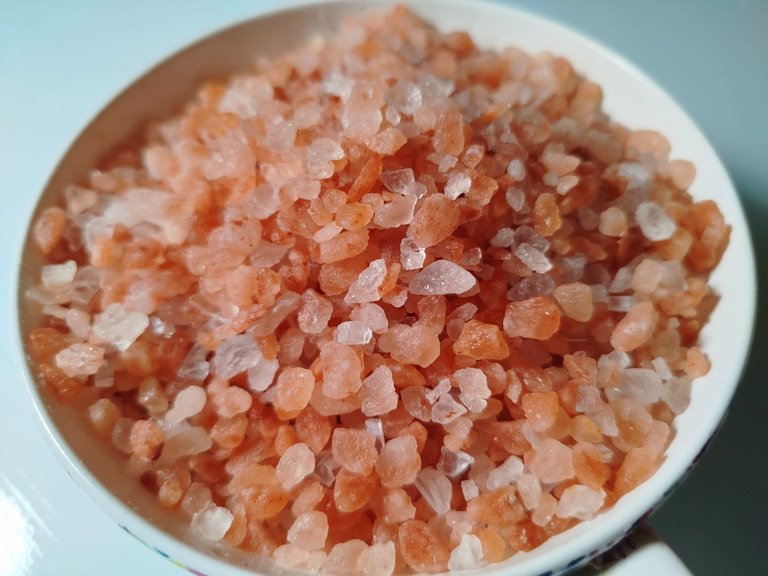
Salt inhibits harmful bacteria while allowing beneficial lactic acid bacteria to thrive.
It helps draw water out of the vegetables, creating an oxygen-free (anaerobic) environment essential for proper fermentation.
It enhances texture, keeping vegetables crisp.
Use sea salt or Himalayan salt instead of iodized salt, which can hinder bacterial growth.
With the right salt ratio, you can ferment various vegetables for different flavours and textures.
Ingredients: 🍃
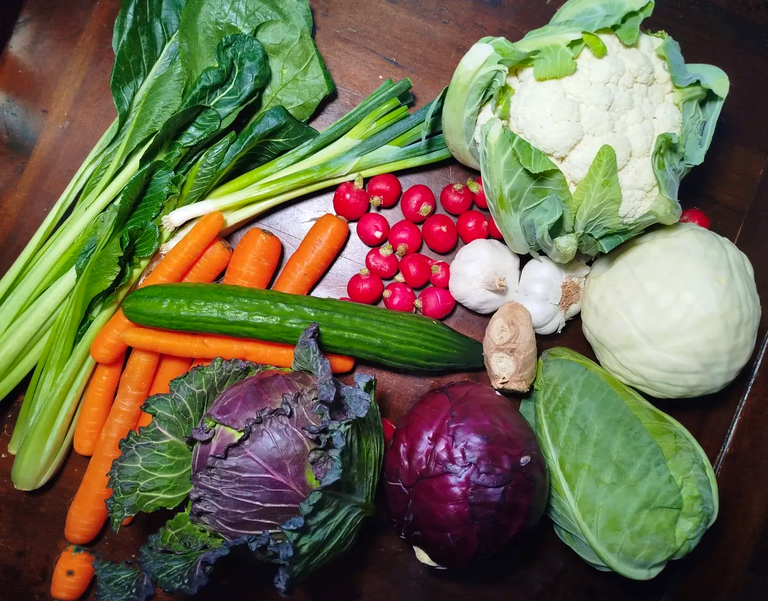
Base Vegetables: Cabbages (green, red & white), cauliflower, carrots, spring onion, radish, choi sum, cucumber.
Flavour Enhancers: Garlic, onion, ginger, chilli flakes or any preference.
Preparation: 🍃
Before starting, ensure all jars, lids, and utensils are thoroughly cleaned with hot water and soap. You can also rinse them with boiling water or use a sterilizing solution to prevent unwanted bacteria from interfering with the fermentation process.
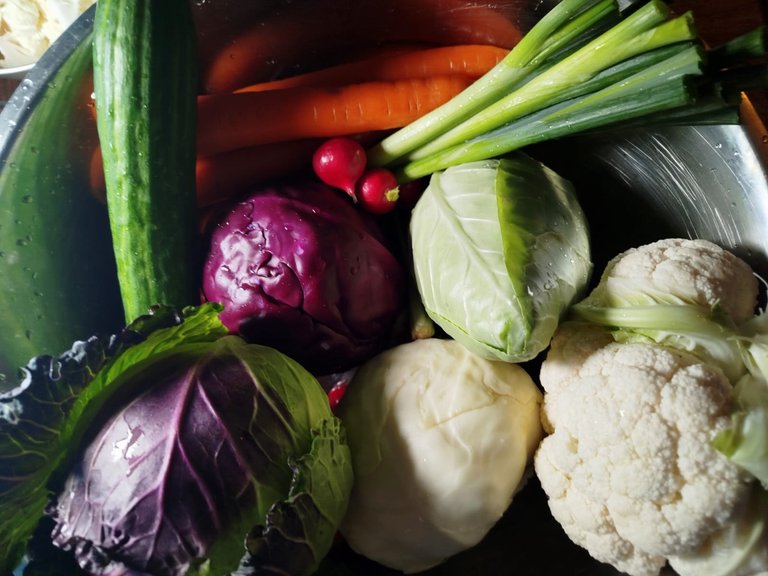
Wash the vegetables with filtered or non-chlorinated water to avoid chlorine, which can disrupt fermentation.
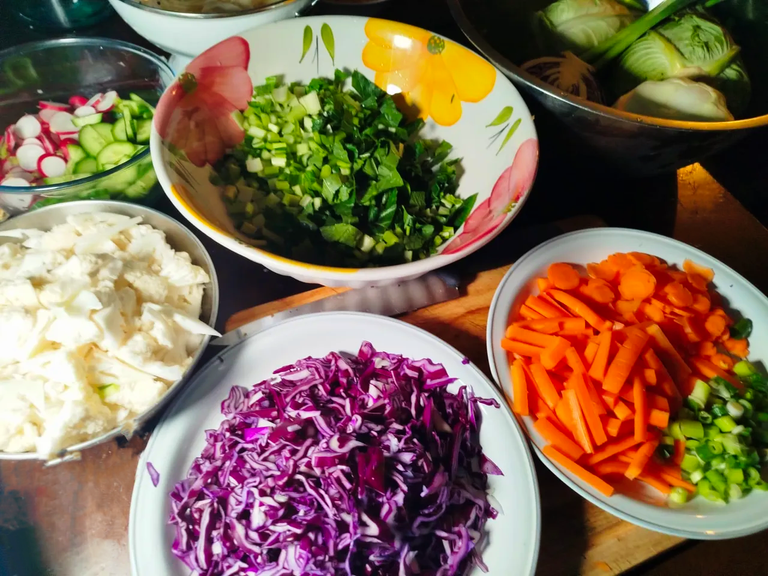
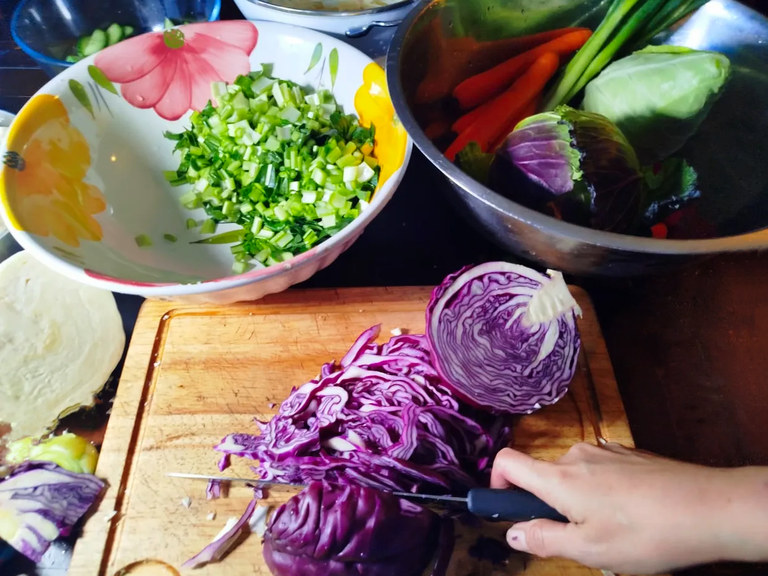
Chop or shred vegetables based on texture preference. For a crunchy mix, cut into bite-sized chunks; for a softer ferment, shred thinly.
Fermentation Methods: 🍃

👉 Brining Method (Best for Hard Vegetables Like Carrots & Cauliflower)
Dissolve 2% salt in water and fully submerge vegetables in the brine.
Use a fermentation weight or a clean jar filled with water to keep vegetables submerged to prevent mould by creating an oxygen-free (anaerobic) environment, which is essential for lacto-fermentation.
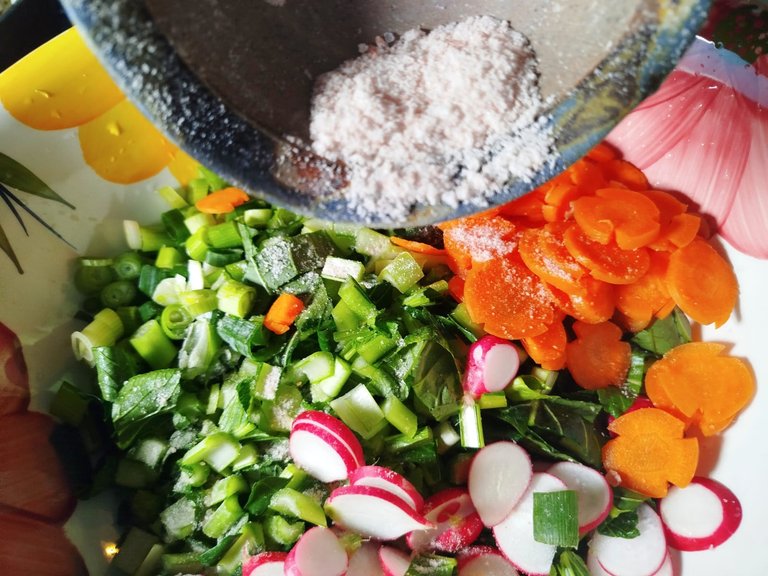
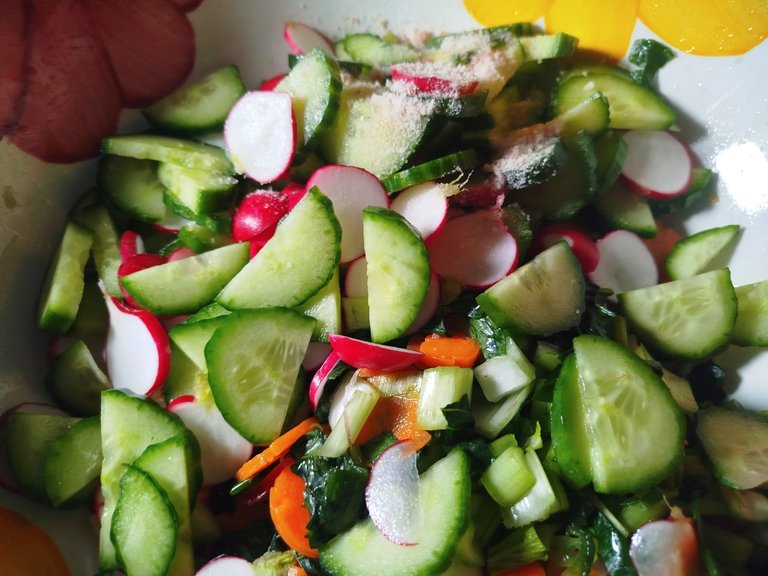
👉Dry Salting Method (Best for Softer Vegetables Like Cabbage & Cucumber)
Sprinkle salt directly onto shredded vegetables and massage well until they release their own brine.
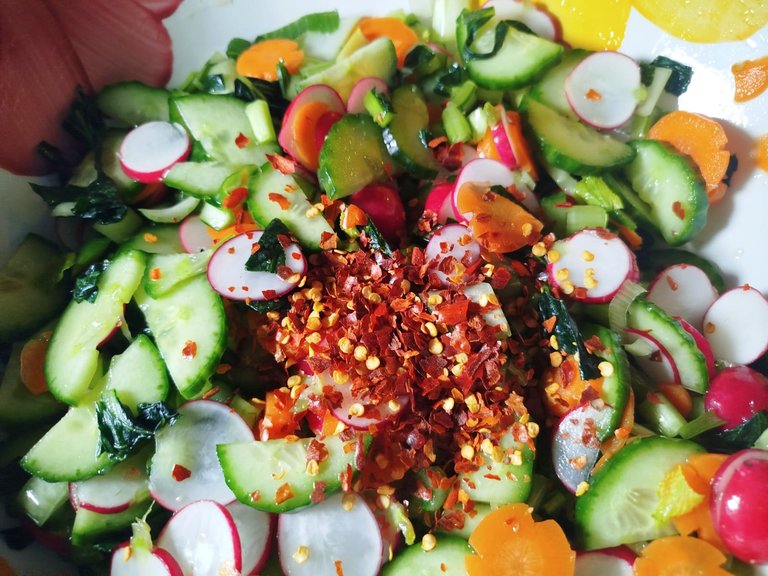
Add any flavour enhancer or spices you prefer.
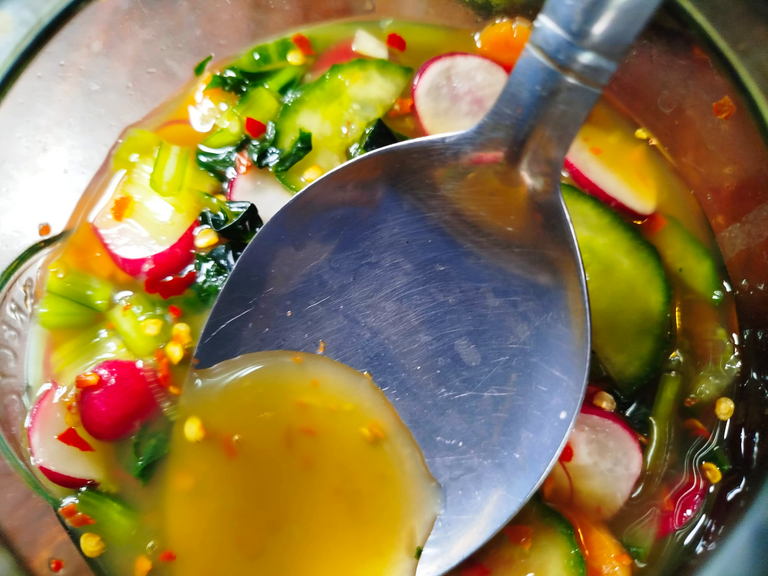
then pack tightly into a jar, and push with a spoon to submerge on its brine.
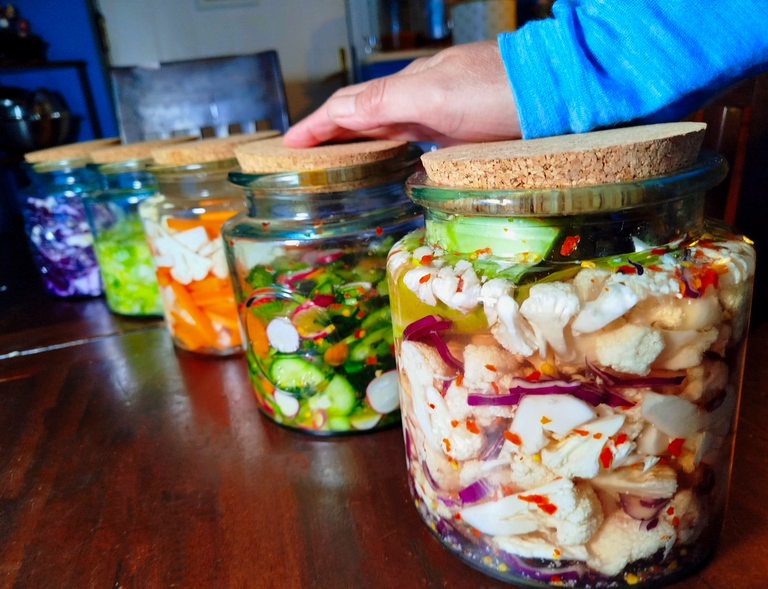
Fermentation & Storage: 🍃
👉Seal and Ferment: Cover the jar with a loose-fitting lid or airlock system to allow gas to escape. If using a tight seal, burp the jar once or twice a day during peak fermentation. Dont forget to label and date.
Ideal Temperature: Keep at 18–22°C (64–72°F) for optimal bacterial activity.
👉Wait & Taste: Start tasting after 3-5 days. The longer it ferments the tangier and more complex the flavour. Some ferments reach peak flavour in 1-2 weeks.
👉Refrigerate once the desired taste is reached to slow fermentation.
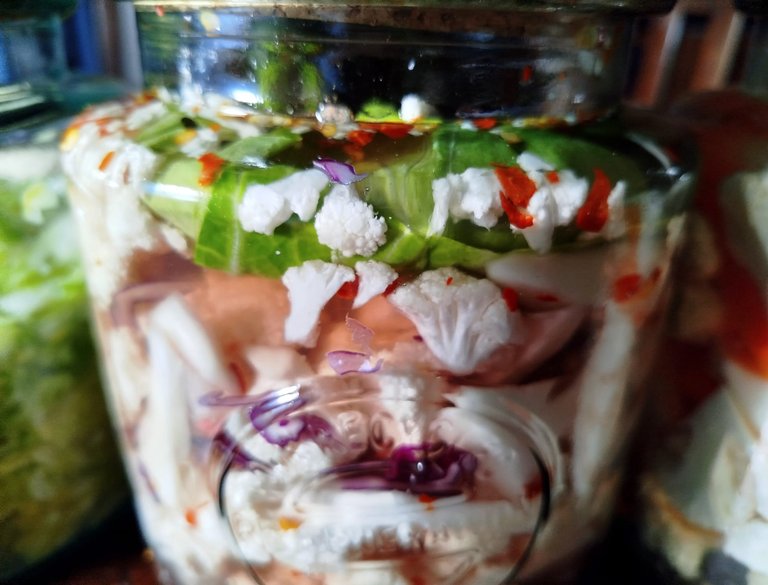
Why Fermented Foods Are So Beneficial 🍃
👉Boosts Gut Health: Rich in probiotics, fermented vegetables help maintain a balanced gut microbiome, which supports digestion and immunity. study
Research
👉Increases Nutrient Bioavailability: Fermentation breaks down anti-nutrients like phytic acid, making vitamins and minerals easier for the body to absorb. Research
👉Enhances Flavor: Natural acids and enzymes create deep, tangy flavours that elevate any meal.
👉Supports Mental Health: The gut-brain connection means a healthy gut can positively impact mood and cognitive function. Research

Ways to Enjoy Fermented Vegetables: 🍃
As a side dish with rice, noodles or chips.
As a crunchy topping for tacos or sandwiches
With fried or roasted meats or fish
Mixed into salads for a tangy twist
Added to soups for a flavorful probiotic boost

Fermenting is Fun, Easy, and Worth It! 🍃
Fermenting vegetables at home is simple, rewarding, and an incredible way to boost your gut health. With just salt, water, and time, you can create flavourful, probiotic-rich foods that are both nutritious and delicious.
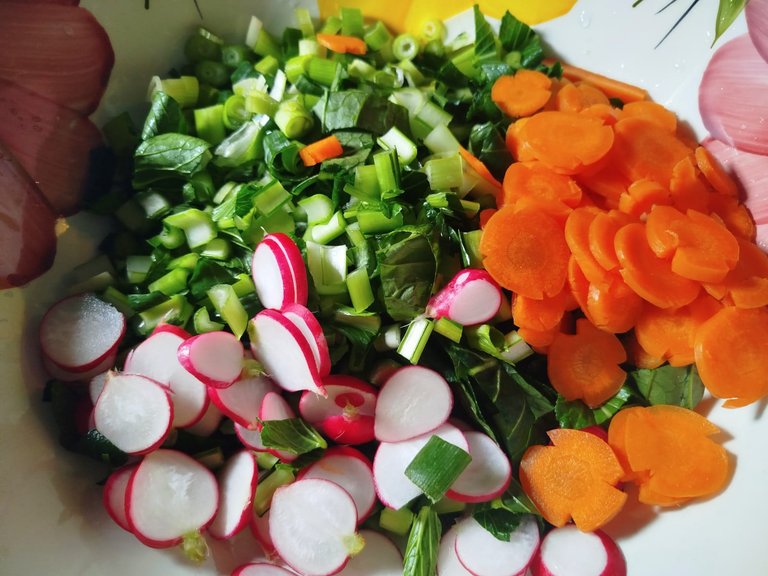
Whether you’re making a spicy kimchi-style blend or a crunchy radish-cucumber pickle.
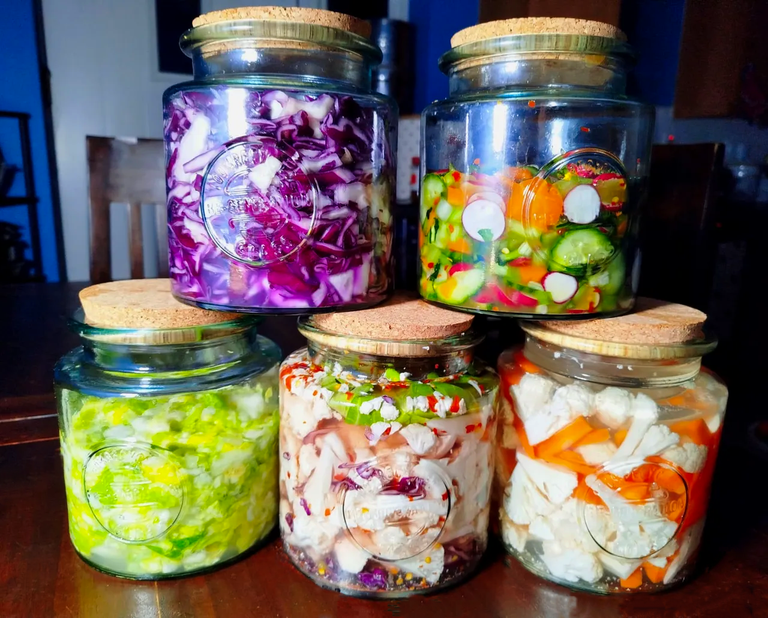
or a savoury fermented cauliflower mix. The possibilities are endless!
So, grab your veggies, mix, match, and start fermenting today!
Have a nice day, everyone!
Mariah 🍃🥕
The rewards earned on this comment will go directly to the people( @theworldaroundme ) sharing the post on Reddit as long as they are registered with @poshtoken. Sign up at https://hiveposh.com. Otherwise, rewards go to the author of the blog post.
Sending Ecency curation votes
Many Thanks 🩷😄
!BBH Very nice post and excellent photos!
Thank you 💗😊